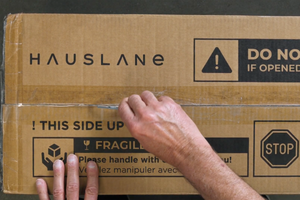4 Reasons You Should Upgrade Your Kitchen Range Hood
You probably know the signs that your refrigerator isn’t working. All of a sudden, nothing stays cool or frozen. The same goes for your dishwasher; maybe it refuses to run, leaks water, or leaves dishes dirty. But what about your range hood? Do you know how to spot a potential issue? It can be a little trickier to pinpoint signs that your range hood needs a repair or replacement. To make things simple, we’re sharing the nine biggest signs it’s time to fix or upgrade your vent hood.
What We'll Cover:


Why Do Range Hoods Fail?
Range hoods start working due to damage, a faulty part, or general wear and tear over their lifespan. The most common issues with range hoods are burned-out motors and broken on-and-off switches. Besides simply not turning on, you may notice something is wrong with your vent hood when you hear excessive noise when it’s on. That’s typically a sign something is up with the fan or motor. You may also notice poor suction if the fan blade is broken or the filters need replacing, or need to be unclogged.
How Long Do Range Hoods Last?
The lifespan of your range hood will be dependent on the individual model, quality, and use. Most range hoods last 12 to 18 years, about 15 years on average.
Want your range hood to last longer? Follow these simple maintenance tips to keep it in tip-top shape.

Your Range Hood Isn't Powerful Enough
This sign is the most obvious one, but there are some layers to it. First, you may notice that your range hood won’t turn on, or perhaps it does turn on but won’t run. This sign could mean you need to change your filters, but in many cases, it indicates a bigger problem and may warrant a replacement altogether.
You may see your range hood run but find it lacks enough cubic feet per minute (CFM) to truly ventilate odors, smoke, and fumes. Any lingering smoke after running your range hood is a sign your current model isn’t a fit. Ideally, your range hood should clear out smoke and fumes on the lowest setting. If you’re cranking it up to the highest and feeling sick from pungent odors, it’s time to find a new range hood. That doesn’t mean you have to purchase a large model, though; built-in range hoods have plenty of power packed in a smaller package.

You're Missing Out on New Technology
Range hoods today offer more features than those of the past. From steam-cleaning functions to replaceable LED lights, you may be missing out great features if you’re hanging onto an outdated model. This is a good opportunity to take on related kitchen upgrades that don’t require a full remodel, such as repainting cabinets, swapping out hardware, or touching up trim.

Your Range Hood is Too Loud
Got a headache or just feel flat-out overstimulated from your range hood’s sound? This is a sign that the sones level is too high. Depending on the construction and suction power of your range hood, it may be quite loud when operating. To avoid this issue, check for a lower sones level and make sure your range hood has fan speed settings to choose from.

Your Kids Hate Cooking Smells
Feeding kids is a bit of an art and a science. If cooking smells are ruining the menu for your most critical audience, you likely need a range hood with higher suction power. The right range hood won’t leave odors behind to bother sensitive little noses.








